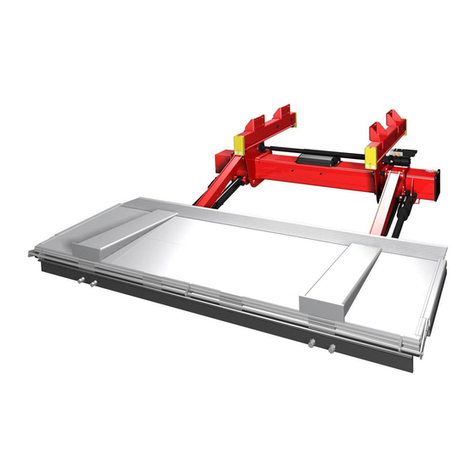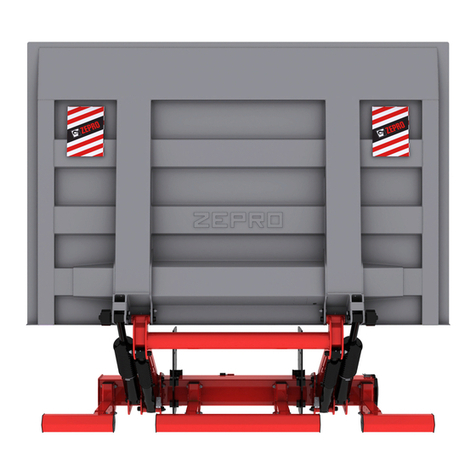7 Temporary operation of lift............................................................................... 30
7.1 Connecon .................................................................................................30
7.2 Operaon ...................................................................................................30
7.3 Disconnecon.............................................................................................30
8 Electrical
and
hydraulic drawings ...................................................................... 31
8.1 ZHDN 2500-150 ..........................................................................................31
8.2 ZHD 2500-150, angle sensors .....................................................................32
8.3 Connecngcontroldevice .........................................................................33
8.4 Connecngcontroldevice .........................................................................34
8.5 Connecngcabinswitchandopenplaormalarm....................................35
9 Connection unit ............................................................................................... 36
9.1 Operanginformaon................................................................................36
9.2 Autolt........................................................................................................41
9.3 Funconalschemacdrawing....................................................................42
9.4 Restriconofuseofcontroldevice ............................................................43
9.5 Sensor
....................................................................................................44
9.6 Hydraulic unit .............................................................................................45
10 Marking and decals .......................................................................................... 46
10.1 Summary ....................................................................................................46
10.2 Load diagram..............................................................................................47
10.3 Idencaonplate.....................................................................................47
10.4 Work area ..................................................................................................47
10.5 Driver'sinstrucons....................................................................................48
10.6 Danger area ...............................................................................................48
10.7 Warning tape .............................................................................................48
10.8 CE marking..................................................................................................49
10.9 Warningags.............................................................................................49
11 Lubrication and fluid level check....................................................................... 50
11.1 Lubricaon..................................................................................................50
11.2 Fluid level check .........................................................................................50
12 Testing and verification .................................................................................... 51
12.1 Stacloadtest ............................................................................................51
12.2 Dynamic load test.......................................................................................52
12.3 Testofsafetyfuncons...............................................................................52
13 Disassembly ..................................................................................................... 53
14 Specifications .................................................................................................. 54
14.1 Weights ......................................................................................................54
14.2 Centre of gravity .........................................................................................55
14.3 Maximumpowerconsumpon-Minimumrecommendedconductorcrossseconal
area ............................................................................................................56
14.4 Loading diagram .........................................................................................57
14.5 Tightening torque .......................................................................................58





























